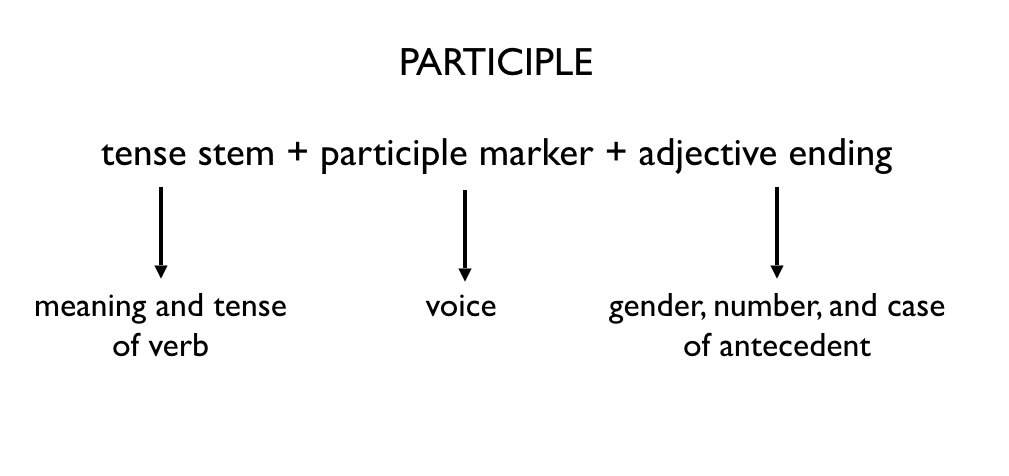37.5 An ancient grammarian once wrote that the Greeks were φιλομέτοχοι, participle-loving. This is no exaggeration. Nearly a third (!) of Greek verbal forms are participles. As a result, mastering Greek participles is essential to reading almost any paragraph of ancient Greek.
As VERBAL ADJECTIVES, Greek participles are part VERB (and so possess tense and voice), and part ADJECTIVE (and so decline to reflect gender, number, case):
Greek participles exist in three tenses: PRESENT, FUTURE, and AORIST. To form each of these tenses:
Participles use the same TENSE STEM that a given VERB uses in the INDICATIVE mood.
Greek participles exist in the ACTIVE, MIDDLE, and PASSIVE voices. To mark these voices:
Participles add VOICE MARKERS to the tense stem.
Finally, Greek participles must be able to reflect the GENDER, NUMBER, and CASE of their ANTECEDENT, i.e., the noun to which the participle refers or modifies. To match the antecedent:
Participles add ADJECTIVE endings.
Putting it all together, the formation of a participle looks something like this:
37.6 The pattern for ALL PARTICIPLES in the ACTIVE voice is:
- tense stem + ντ + 3-1-3 adjective endings
- A σ is added before the 1st declension endings for the FEMININE
- 1st declension endings for the FEMININE use ᾰ in the nominative and accusative singular.
- The persistent accent is on the LAST VOWEL SOUND of the TENSE STEM.




